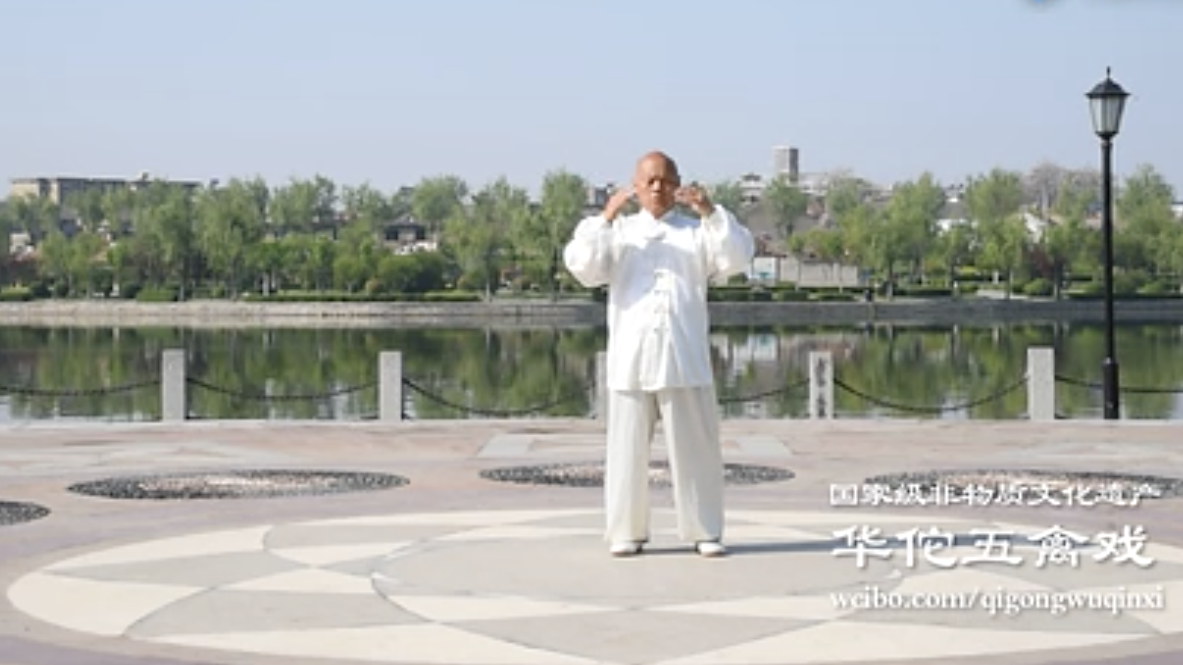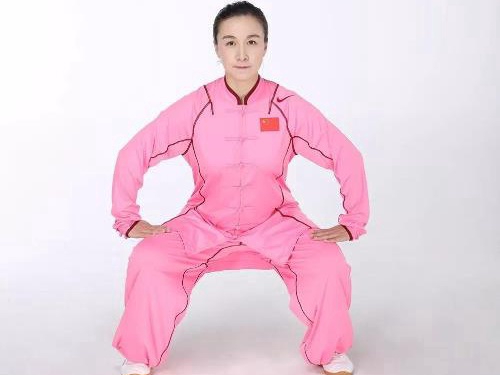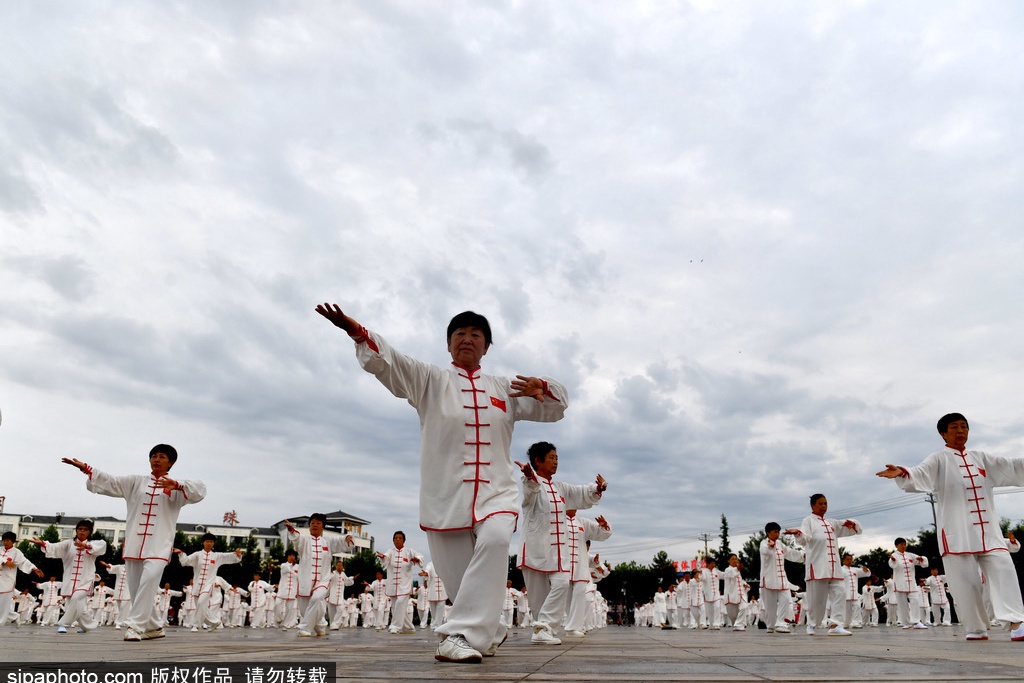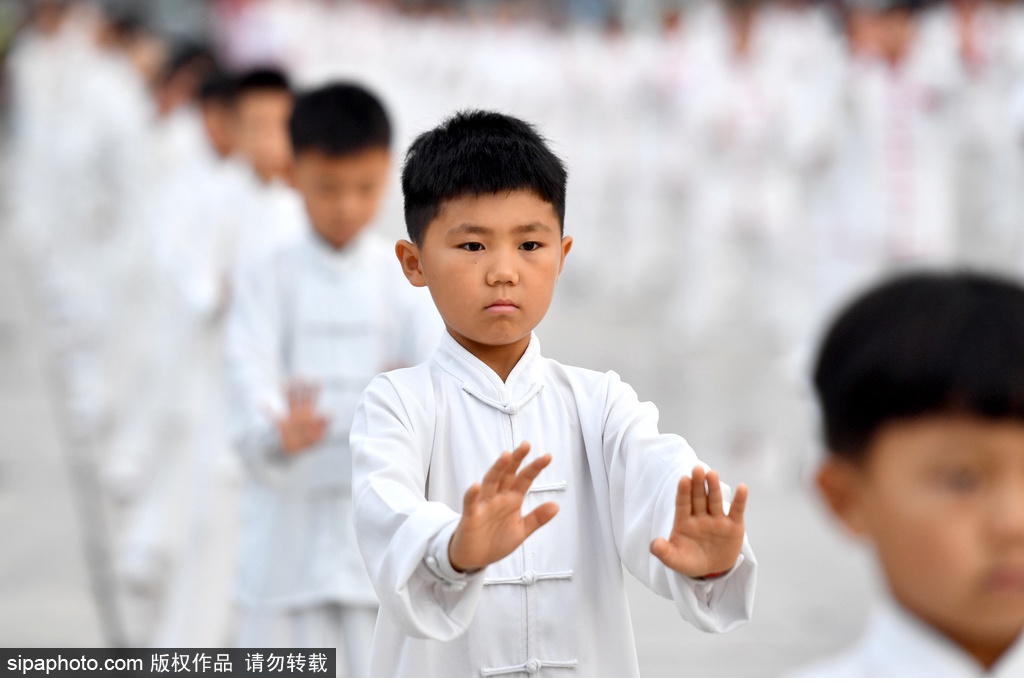The wisdom of fitness is deeply contained in the extensive and profound traditional Chinese culture, and it is the outcome of Chinese people’s wisdom for thousands of years. Wu Qin Xi, Ba Duan Jin, Xing Yi Quan and other sports, which are gradually explored from life, can not only strengthen the body but also purify people's mind. There is no fierce confrontation. Every move is extremely exquisite, so that people can reach the state of physical and mental integration.
1.Wu Qin Xi
Wu Qin Xi (imitating the movements and manners of tiger, deer, bear, ape, and bird) was created by Hua Tuo who was a famous doctor in East Han Dynasty. The History of the Three Kingdoms records “The play of Wu Qin is tiger, deer, bear, ape, and bird. The movements are good to the eliminate disease and good for feet.” Wu Pu, his apprentice, insisted on practicing Wu Qin Xi. When he was more than 90 years old, he was still in good health.

Wu Qin Xi is one kind of the Traditional Chinese Guidance. When practicing, we should make sure that our thoughts, breath and actions cooperate with each other. The mind concentration makes us calm and cultivate zhenqi in our inner body; the even breath can promote the circulate of qi and regulate bodily functions; the movement can strengthen the bones and muscles and benefit the joints.
The movements of Wu Qin Xi
Tiger action is to imitate the action of tiger, that is, the spirit and the actions of using claws, shaking the head and tail, and invigorate the whole body. This set of action is very beneficial to our kidney and waist. It can also strengthen the bones, clear the veins and remove the moisture in the inner body.
Deer action is to imitate deer's movements which can guide qi running through the whole body, regulate bodily functions, clear and smooth the blood vessels, and stretch muscles and bones. Thus it helps us to reach a longevity and refreshing mind.
Bear action is to imitate bear's movements. The bear has a large figure and a strong body; they are static outside but active inside. Thus when practicing this set of movements, we should focus on keeping active in the inner body but static in the appearance. In this way, we can keep our mind calm, harmonize the will and spirit, smooth the zhenqi. It also has therapeutic effect on our spleen and stomach.
Ape action is to imitate the actions of the ape. The ape is alert, flexible, and restless. Practicing this set of actions is to improve the flexibility of our body and prohibit the activity of our inner mind, in order to reach the calmness of our mind and improve our physical fitness.
Bird action is also called crane action, that is to imitate the image of the crane. The movements are gentle and stretching. This set can coordinate qi and blood, regulate bodily functions, and stretch muscles and joints.
2. Ba Duan Jin
Ba Duan Jin is a kind of martial arts which is composed of eight movements. Because of its remarkable fitness effect and easy practice, it has been widely spread among the people for more than one thousand years and is a treasure in the traditional Chinese health culture. The whole set of movements is simple and dignified, gentle and stretching, with both movement and stillness. It is not limited by the venue, time and environment. You can practice on your own at any time anywhere. It can improve physical health, strengthen the function of viscera, improve mental health, prevent and cure chronic diseases, and delay the aging of the body. When practicing, you should proceed in an orderly way and step by step. No matter what is the level of sports load or action difficulty, we should follow the principle of from simple to complex, from easy to difficult, and from less to more.

Liu Xiaolei, world champion of martial arts and associate professor of Beijing Sport University, guides you to practice Ba Duan Jin and helps you exercise at home. The video shows the standard action. When you practice, you should do it according to your physical conditions. This set of actions can achieve the effect of moving joints, strengthening metabolism and enhancing immunity.
3. Taijiquan: ten postures
“The Taijiquan Ten Movements” is based on Yang Style of Taijiquan, and absorbs some elements of Chen Style. Like traditional Taiji, the movements are light, gentle, natural and powerful, which fully highlights the technical requirements of Taijiquan, that is, moving the body under the guidance of mind, and combining strength and softness at the same time. This set of movements is not affected by the venue, time and environment, and can be practiced anytime anywhere. Persisting in practice can enhance physical fitness, strengthen heart function, relieve pressure and prevent and treat chronic diseases, and delay aging.

When practicing, you should proceed in an orderly way and step by step. No matter the level of sports load or action difficulty, we should follow the principle of from simple to complex, from easy to difficult, and from less to more.
4. Yi Xing Quan
Yi Xing Quan is one of the traditional martial arts. It was founded by Li Feiyu, a native of Shen County, Hebei Province in 1860's. It is based on Wu Xing Quan, and also takes the characteristics of 12 kinds of animals' movements of predating and defensing to create a set of 12 movements.
Tips and Precautions: stand upright, relax in body and mind, hold the mind and focus on actions. In the process, you should pull and stretch the body, especially pulling the chest and rib muscles up and out. The movement should be slow, gentle, not fast, and not fierce.
Functions: it can stretch the chest and back, calm the mind, enhance lung function and promote the normal operation of heart and blood.
Let’s follow Zhang Zengji, a representative inheritor of Xing Yi Quan of intangible cultural heritage project of Xicheng District, and practice six movements of Xing Yi Quan.
5. Wu Style Taijiquan
Wu style Taijiquan was initially formed by Quan You, a Manchu in Daxing, Beijing. After his death in 1902, his disciples Wang Maozhai and Wu Jianquan promoted it and the movements were officially finalized. In 1928, with Wu Jianquan moving to Shanghai, Wu style Taijiquan was divided into two schools: South and North. Wu style Taijiquan is a combination of fight and body-building. The whole set of movements includes Peng (warding off), Lv (rolling back), Ji (pressing), An (pushing), Cai (pulling down), Lie (splitting), Zhou (elbowing), Kao (body stroke), Jin (advancing), Tui (retreating), Gu (shifting left), Pan (shifting right) and Ding (central equilibrium), 8 in total. From the simple to complex, all the movements form a comprehensive system.
Functions: every movement of Taijiquan is soothing, soft, gentle and stretching. It strengthens the physical and mental body at the same time. The two movements are the most basic and simple ones. But it can also relax the mood, balance yin and yang, enhance metabolism and improve immunity, even for strangers.

Attention:
1. The movement must be stretched, soft and not too rigid.
2. Be gentle and relaxed. Use not intended force. Practice every movement in a completely relaxed state. Relax the stomach and hold qi in the stomach. Stay focused and calm. Practice slowly and comfortably. Be meticulous and standardize every movement. Every step should be as gentle as cat walking and every move should be as slow as we can.
3. Practice every movement with all your mind. Only when the mind is fully focused can we relax our body completely. Don't think about other things. Don't be affected by the surrounding environment.
4. When practicing each movement, we should first consider it, and then use the strength of the waist to drive the body. Use our mind to lead the motion.
5. In every movement, we should coordinate hands and feet, elbows and knees, shoulders and crotch. Combine the stillness and action together. Keep the body as a whole.
6. We should try our best to remember the name and requirements of each action. We should memorize and recite the philosophy of Quan and the acupuncture points of our body. We should try our best to learn more about philosophy, medicine, literature and art, calligraphy, painting, natural science and other aspects to increase connotation, which can effectively improve memory, cultivate the skills of Taijiquan, and delay brain cell aging.



